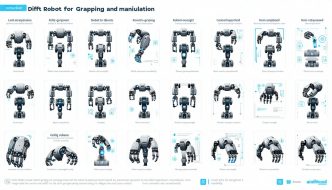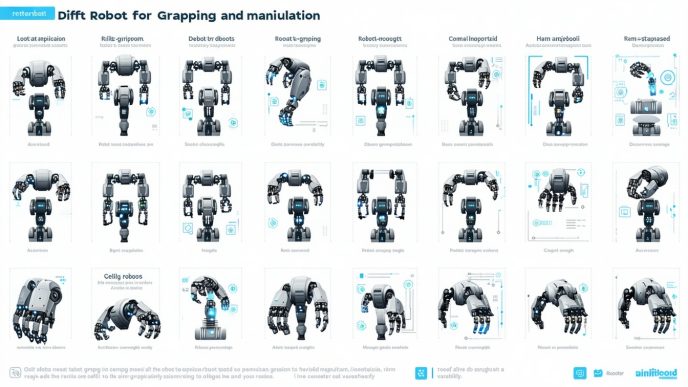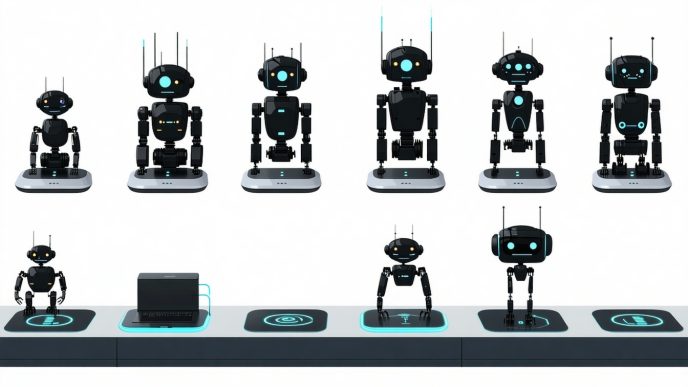Introduction to Robots for Elderly Care Assistance
Importance of Robotics in Senior Care
The integration of robotics in elderly care provides numerous advantages, significantly enhancing daily living and support for seniors. Robotics can offer assistance with routine tasks, promote independence, and improve the overall quality of life for elderly individuals. As the aging population grows, the necessity for effective support systems becomes paramount, making robotics an invaluable tool in modern senior care.
Robots can help manage medications, monitor health conditions, and provide companionship, thus addressing both practical and emotional needs. The employment of advanced technologies enables these robots to operate efficiently and securely within home environments, ensuring safety and ease of access for seniors.
Overview of Feature-Specific Comparisons
When determining the best robot for elderly care assistance, it is crucial to evaluate specific features rather than focusing solely on brand names or models. Buyers, engineers, and reviewers can benefit from an understanding of various functionalities, including gripping ability, AI intelligence, navigation skills, and battery life.
A feature-specific comparison allows users to make informed decisions based on their needs. The following table offers a summary of key features that contribute to the effectiveness of robots in elderly care:
| Feature | Importance | Key Considerations |
|---|---|---|
| Gripping Ability | Essential for interacting with objects | Includes strength, dexterity, and control |
| AI Intelligence | Enables decision-making and learning | Focuses on adaptability and responsiveness |
| Navigation Skill | Critical for movement and mapping in home spaces | Includes obstacle avoidance and route planning |
| Battery Life | Determines operational time without recharging | Affects usability and reliability |
For more detailed comparisons, readers can explore our links on feature specific robot comparisons to better understand the elements that determine robots’ capabilities in the context of elderly care.
Gripping Ability
Importance of Gripping Ability in Robotics for Seniors
Gripping ability is a critical feature in robots designed for elderly care assistance. Many tasks that seniors may need help with involve lifting, holding, or manipulating objects, such as medication bottles, utensils, or personal belongings. Therefore, a robot’s capacity to grip securely and delicately is fundamental to providing effective support.
A well-designed gripping mechanism allows robots to assist in daily activities without causing harm to the objects or the user. This capability not only enhances convenience but also promotes safety, since a secure grip reduces the likelihood of dropping items which can lead to accidents.
Effective gripping also allows robots to engage in complex tasks, such as serving food or assisting with personal hygiene. As such, understanding the importance of gripping capability is essential when assessing the best robot for elderly care assistance in various caregiving scenarios.
Factors Affecting Gripping Ability in Robots
Several key factors influence the gripping ability of robots intended for senior support. These include:
-
Gripper Design: The shape and material of the gripper play a crucial role in its performance. Designs that are soft and flexible can adapt better to different object shapes, while rigid designs might provide more stability for heavier items.
-
Force Control: Robots must be equipped with the ability to adjust the force applied when gripping objects. This prevents damaging fragile items or causing discomfort to users when lifting personal belongings.
-
Sensors and Feedback Systems: The integration of sensors allows robots to detect the size, weight, and texture of objects. Feedback from these sensors enables real-time adjustments to the gripping force, ensuring optimal handling.
-
Size and Weight of the Robot: The overall dimensions and weight of the robot can affect its ability to grip and manipulate larger objects. A robot that is too small may not have the leverage needed, while a heavier robot may manage heavier objects better.
| Factor | Description |
|---|---|
| Gripper Design | Shape and material impact adaptability to various objects |
| Force Control | Ability to adjust force to prevent damage or discomfort |
| Sensors | Provide data for real-time adjustments during gripping |
| Robot Dimensions | Affects leverage and capability to handle larger items |
These factors must be considered when comparing robots based on their gripping ability. For those interested in further comparisons of robot features, refer to our article on feature specific robot comparisons. Understanding these elements can lead to more informed choices when selecting a robot to provide reliable support for seniors.
AI Intelligence
Significance of AI Intelligence in Robots for Elderly Care
Artificial Intelligence (AI) plays a critical role in enhancing the functionality and effectiveness of robots designed for elderly care. AI intelligence enables these robotic devices to interact with seniors in a meaningful way, providing assistance tailored to individual needs. The ability to understand and process natural language, recognize faces, and learn from interactions significantly improves the user experience.
AI helps in decision-making processes, allowing robots to assess situations in real-time. For instance, they can monitor a senior’s daily activities, detect potential emergencies, and respond accordingly. This proactive approach not only ensures the safety of elderly individuals but also promotes their independence. For a deeper understanding of AI capabilities, explore our article on the best robot for AI decision making.
Components of AI Intelligence in Robotics
AI intelligence in robotics encompasses several key components that work together to provide effective and reliable support for seniors:
| Component | Description |
|---|---|
| Natural Language Processing (NLP) | Enables robots to understand and respond to spoken language, improving communication. |
| Machine Learning (ML) | Allows robots to learn from experiences and improve their responses over time. |
| Computer Vision | Helps robots to recognize objects, faces, and navigate their environment accurately. |
| Sensor Integration | Incorporates various sensors (e.g., cameras, microphones) for interaction and data collection. |
| Predictive Analytics | Uses data to forecast needs and potential issues, providing timely assistance to seniors. |
These components contribute to creating an adaptable and responsive environment for elderly care, enhancing their quality of life. For further comparisons, consider exploring our content on feature specific robot comparisons to gain insights on other essential features in robotic assistance.
Navigation Skill
Robots designed for elderly care assistance require a finely tuned navigation skillset to effectively operate in home environments. These navigational abilities play a crucial role in how well a robot can assist seniors in their daily activities.
Navigational Requirements in Robotics for Senior Support
Effective navigation is essential for robots in senior care, ensuring they can safely and efficiently maneuver through various environments. Key navigational requirements include:
- Obstacle Detection: Robots must identify and navigate around common household obstacles such as furniture, pets, and other objects, ensuring the safety of both the robot and the user.
- Path Planning: The ability to devise the most efficient routes for accomplishing tasks is critical. This involves calculating the distance to be covered while avoiding obstacles.
- Adaptive Movement: Robots should adapt to dynamic environments where objects may change locations, requiring real-time adjustments to their navigation strategies.
- Multifloor Navigation: For homes with multiple levels, robots must have the ability to navigate stairs or know how to operate in different rooms effectively.
Techniques for Efficient Navigation in Robots
Various techniques enhance the navigational proficiency of robots, making them suitable for elderly support:
| Navigation Technique | Description |
|---|---|
| LiDAR | Light Detection and Ranging technology allows robots to create detailed maps and recognize their surroundings, aiding in accurate obstacle avoidance. For more on this, see our article on best robot for navigation and mapping. |
| Visual Recognition | Cameras are employed for recognizing and interpreting the environment, enabling robots to understand complex scenes. This complements other methods, enhancing overall navigation capabilities. |
| Sensor Fusion | Combining data from various sensors (e.g., ultrasonic, infrared) creates a comprehensive view of the surroundings, improving obstacle detection and path planning. |
| Simultaneous Localization and Mapping (SLAM) | This technique allows robots to build a map while simultaneously keeping track of their position within that map, facilitating efficient navigation in unfamiliar spaces. |
| Predefined Routes | Programmable routes can be set to streamline navigation tasks, enabling the robot to perform repetitive duties without needing to constantly recalibrate its surroundings. |
By employing advanced navigation techniques, robots can maximize their efficacy in providing assistance to seniors. This is an important feature to consider when evaluating the best robot for elderly care assistance. It is crucial for users to understand these navigational capabilities when making comparisons based on important individual features.
Battery Life
Impact of Battery Life on Robot Performance in Elderly Care
Battery life is a crucial aspect of robotic devices designed for elderly care. A longer battery life allows robots to operate for extended periods without requiring recharging, which is essential for providing continuous assistance. When evaluating the best robot for elderly care assistance, it is important to consider how battery life can affect the robot’s functionality, reliability, and overall effectiveness.
Robots with shorter battery life may require frequent recharging, which can hinder their availability for tasks such as medication reminders, emergency alerts, or companionship. Conversely, those with extended battery life can ensure uninterrupted support, enhancing user satisfaction and peace of mind for both seniors and caregivers.
Factors Influencing Battery Life in Robotic Devices
Battery life in robotic devices is influenced by several factors, including battery type, energy consumption of different features, and overall design.
-
Battery Type: Different types of batteries have varying energy densities and lifespans. Lithium-ion batteries are commonly used in robotics for their combination of long life and efficient energy use.
-
Energy Consumption: The operational demands of specific features such as AI intelligence, navigation skills, and gripping ability can influence battery life significantly. Features that require more processing power and constant sensors usage, like best robot for navigation and mapping, will drain batteries faster.
-
Design and Weight: The physical design and weight of the robot can affect its energy efficiency. Heavier robots may require more energy for movement, thus reducing battery life. Lightweight designs are often more efficient.
The following table summarizes the average battery life of different types of robotic devices used in elderly care:
| Robot Type | Average Battery Life | Primary Use Case |
|---|---|---|
| Companion Robots | 8 – 12 hours | Emotional support, conversation |
| Health Monitoring Robots | 6 – 10 hours | Vital signs monitoring, alerts |
| Mobility Assistance Robots | 4 – 8 hours | Support with movement and navigation |
| Cleaning Robots | 2 – 4 hours | Floor cleaning, maintenance tasks |
For more in-depth comparisons focused on battery life, visit our article on the best robot for battery life. Understanding the intersection of battery performance and essential features can help users select the most effective robotic support systems for elderly care needs.
Summary of Key Features
Integration of Gripping Ability, AI Intelligence, Navigation Skill, and Battery Life
In assessing the best robot for elderly care assistance, understanding the integration of key features such as gripping ability, AI intelligence, navigation skill, and battery life is vital. Each of these capabilities plays a crucial role in enhancing the robot’s overall effectiveness in supporting seniors.
| Feature | Description | Importance in Elderly Care |
|---|---|---|
| Gripping Ability | Ability to grasp and manipulate objects | Assists with daily tasks and reduces risk of spills |
| AI Intelligence | Decision-making capabilities and learning | Improves interaction and customization of assistance \ |
| Navigation Skill | Movement through environments | Ensures safety and efficient support in multiple rooms |
| Battery Life | Duration of operation before charging needed | Allows for uninterrupted service and reliability |
The seamless functioning of these features can significantly improve the user’s experience, making it essential for buyers and engineers to evaluate each feature’s performance. For in-depth insights into specific features, consult our links on feature specific robot comparisons.
Importance of Understanding Different Feature Priorities
Not all features carry the same weight for every user. Depending on individual needs, priorities will vary. For instance, those focusing on mobility may prioritize navigation skill, while others may emphasize gripping ability for assistance with household tasks.
When selecting a robot for elderly care, it is beneficial to assess the specific needs of the user in tandem with the robot’s capabilities. Factors like physical limitations, spatial environment, and personal preferences should guide feature prioritization.
For further exploration of individual features, consider checking out articles on the best robot for grasping and manipulation, best robot for navigation and mapping, and best robot for ai decision making.















